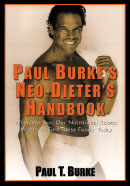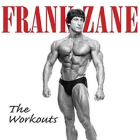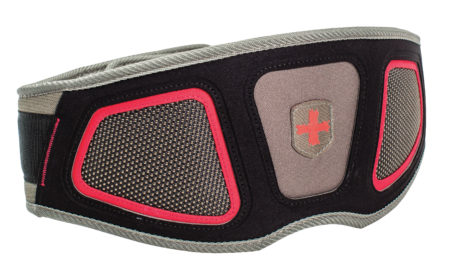 You may recognize Paul Burke as IRON MAN’s Mature Muscle columnist and the author of Burke’s Law—a New Fitness Paradigm for the Mature Male. In his new Neo-Dieter’s Handbook Burke explains how to eat as evolution intended so you can live a longer, more healthy life.
You may recognize Paul Burke as IRON MAN’s Mature Muscle columnist and the author of Burke’s Law—a New Fitness Paradigm for the Mature Male. In his new Neo-Dieter’s Handbook Burke explains how to eat as evolution intended so you can live a longer, more healthy life.
He firmly believes that people should still eat as the ancient hunter-gatherers did. “An amazing chain of events in human nutritional evolution has altered the human skeleton and musculature from a massively tall, lean and powerful human of fearless courage and strength to the short, pear-shaped blubber of ‘kings’ and other royalty of the 18th century.”
You’ll find plenty to chew on in this 115-page book, including Burke’s views on protein and carbs, which shatter a number of myths. The surprises are many as well, including his observations on grain, something you’d think would be nutritious. Think again: “Gluten and lectins are both initiators of digestive chaos. Gluten, the large, water-soluble protein that creates the elasticity in dough, is found in most common grains like wheat, rye and barley (and believe it or not, it is the primary glue in wallpaper paste).” He explains celiac disease, a dangerous aversion to gluten that is becoming increasingly prevalent, and how it relates to ADD and ADHD in children and adults.
So what exactly is the Paleolithic diet that Burke advocates? He defines it as “about 56 to 65 percent from animal foods and 36 to 45 percent from plant foods.” The diet is high in protein—19 to 35 percent—and relatively low in carbohydrate—22 to 40 percent. Fat intake is 28 to 58 percent. You can see that Burke scoffs at the U.S. Department of Agriculture’s traditional food pyramid, with its breads, cereals, pasta and rice forming the base. His pyramid would have “vegetables on the bottom, protein from lean meats and fish, some fruits just below protein, nuts, seeds and berries on top—that’s it.”
The first two-thirds of the book covers what’s good and bad and has lots of interesting historical data and tidbits. The last section includes lists of the best proteins, vegetables and fats and then what to buy and why.
Burke has been a bodybuilder for decades, so there are a lot of references to building muscle and staying lean—and how to eat clean for health, longevity and a great physique. You’ll learn a lot from every chapter.




















You must be logged in to post a comment Login